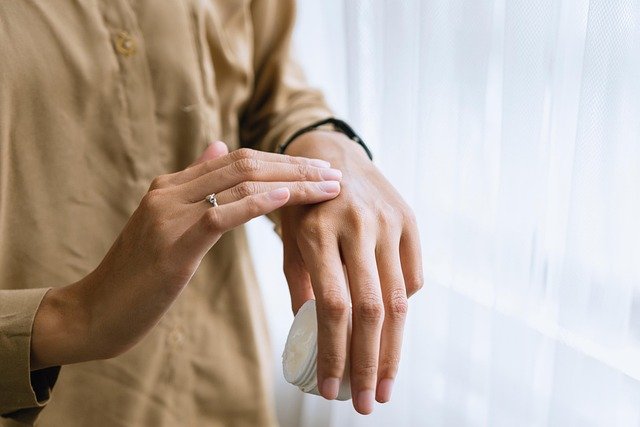Modern Tattoo Removal Technologies Available in Netherlands
Tattoo removal is a process that may help individuals in Netherlands achieve clearer skin by gradually fading unwanted ink. Various modern technologies can assist in this journey, with results often varying based on skin type and the characteristics of the tattoo itself. Understanding the methods available ensures informed decisions regarding the removal process.

Understanding Tattoo Removal Technologies for Effective Results
Tattoo removal works on the principle of breaking down ink particles in the skin so they can be eliminated by the body’s natural processes. The most widely adopted technology in the Netherlands is Q-switched laser treatment, which delivers high-intensity light pulses in nanoseconds. These rapid pulses shatter ink particles without significantly damaging surrounding tissue. More recent advancements include picosecond lasers, which deliver energy in even shorter pulses (trillionths of a second), potentially offering more efficient ink fragmentation with fewer sessions required.
For particularly stubborn tattoos, Dutch clinics may employ combination approaches, such as R20 or R0 methods, where multiple laser passes are performed in a single session with specific waiting periods between treatments. These methods can enhance effectiveness for certain tattoo types but require specialized expertise to minimize skin damage.
Factors Influencing Tattoo Removal Outcomes and Experiences
Several factors significantly impact the success and experience of tattoo removal procedures in the Netherlands. Tattoo age plays a crucial role, with older tattoos typically responding better to treatment as the body has already begun breaking down some ink particles. The colors in your tattoo also matter substantially—black and dark blue inks respond most effectively to laser treatment, while colors such as yellow, green, and fluorescent shades present greater challenges.
Location on the body affects removal success rates too. Tattoos closer to the heart (on the chest, neck, or back) often fade faster due to better blood circulation, which helps eliminate fragmented ink particles more efficiently. Conversely, extremities like ankles and feet typically require more sessions. Individual health factors also influence outcomes—smoking, immune disorders, or certain medications can impair the body’s ability to clear ink particles efficiently.
The expertise of the practitioner remains one of the most crucial determinants of success. In the Netherlands, treatments should only be performed by certified dermatologists, plastic surgeons, or specially trained technicians with experience in different skin types and tattoo varieties.
Exploring Tattoo Removal Options Available
Beyond traditional laser treatments, Dutch clinics offer several alternative approaches for tattoo removal. Intense Pulsed Light (IPL) therapy, while less effective than dedicated laser systems, may be suitable for treating certain tattoo types or as a complementary approach. Some facilities offer skin resurfacing techniques like dermabrasion or chemical peels for superficial tattoos, though these methods carry higher risks of scarring.
For those seeking non-laser alternatives, some Dutch practitioners offer surgical excision—physically removing tattooed skin and suturing the surrounding area. This approach is typically reserved for small tattoos where a clean removal is preferred over multiple laser sessions. Micro-needling with specialized solutions represents another emerging technique, though its availability remains limited in the Netherlands compared to established laser treatments.
Technological Innovations in Dutch Tattoo Removal Clinics
The Netherlands has embraced cutting-edge tattoo removal innovations, with select clinics offering the latest generation of removal technologies. The PicoWay and PicoSure systems, for example, represent the current gold standard in picosecond laser technology. These advanced systems can target multiple ink colors with specialized wavelengths, making them particularly effective for complex, multicolored tattoos that were previously challenging to treat.
Some Dutch facilities also offer dual-wavelength treatments in single sessions, allowing practitioners to target different ink colors simultaneously for more efficient removal. Cooling technologies have advanced as well, with integrated skin cooling systems that minimize discomfort and reduce the risk of thermal damage during high-intensity laser treatments.
Cost and Provider Comparison for Tattoo Removal in Netherlands
The cost of tattoo removal in the Netherlands varies significantly based on the technology used, clinic location, tattoo size, and required treatment sessions. Professional medical centers typically deliver the most reliable results, though at premium prices.
| Provider Type | Technology | Average Cost Per Session | Estimated Full Treatment Cost |
|---|---|---|---|
| Medical Dermatology Clinics | PicoSecond Lasers | €200-€350 | €1,200-€2,800 |
| Specialized Laser Centers | Q-Switched Nd:YAG | €150-€250 | €900-€2,000 |
| Aesthetic Clinics | Combined Laser Approaches | €175-€300 | €1,050-€2,400 |
| Hospital Dermatology Departments | Medical-Grade Lasers | €225-€400 | €1,350-€3,200 |
| Beauty Clinics | IPL or Basic Laser | €100-€200 | €600-€1,600 |
Prices, rates, or cost estimates mentioned in this article are based on the latest available information but may change over time. Independent research is advised before making financial decisions.
Recovery Process and Aftercare Considerations
Recovery from tattoo removal procedures in the Netherlands follows standardized protocols to maximize results and minimize complications. Immediately after treatment, the treated area typically appears red with potential for swelling and blistering. Dutch practitioners generally recommend gentle cleaning, application of antibiotic ointment, and keeping the area covered with sterile dressings for the first few days.
Most clinics advise protecting the area from sun exposure for at least 4-6 weeks between sessions and applying high-SPF sunscreen when outdoors. Complete healing between sessions typically takes 6-8 weeks, though this varies by individual and treatment intensity. During this period, patients should avoid swimming pools, saunas, and strenuous activities that could irritate the treated area. Following these guidelines carefully significantly impacts the ultimate success of the removal process and minimizes the risk of complications such as scarring or pigmentation changes.
This article is for informational purposes only and should not be considered medical advice. Please consult a qualified healthcare professional for personalized guidance and treatment.




